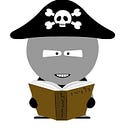Variations Upon “The Wizard of Oz”
New views of Baum’s classic via literary criticism and illustration (from the journal Children’s Literature)
Others might say what I say: Michael Hearn taught me how to read The Wizard of Oz. After the book, the place to turn was Hearn’s The Annotated Wizard of Oz (Clarkson Potter). Until now the next step was to find the works listed in that volume’s bibliography.
Schocken’s new critical edition of The Wizard makes this last step obsolete. In place of my sheaf of photocopies, I can now substitute this single volume which collects in one place all the criticism I had to acquire through hours of labor in the library. Here are most of the works listed in the earlier bibliography together with some new additions (for example, Brian Attebery’s section on Oz in his Fantasy Tradition in American Literature).
Those familiar with Oz criticism will find many standard works here: the anecdotal and personal essays (usually of first encounters with Oz) by James Thurber, Gore Vidal, Ray Bradbury, and Russel Nye; the treatises by Wagenknecht, Bewley, Sackett, and Littlefield which argue (much too seriously, in my opinion) that Oz is a utopia. There are two sections containing material fresh to me: one prints four essays that chronicle the petulant rejection of Oz books by librarians; the other section contains both an important essay by Baum (“Modern Fairy Tales”) and Hearn’s own intelligent gloss on it (“L. Frank Baum and the Modernized Fairy Tale”). Finally, there is one thing I missed: for nearly everyone (except, perhaps, subscribers to The Baum Bugle) the book and the MGM movie are so inextricably entwined in memory that they seem like, say, two versions of “Little Red Riding Hood”; I would have been pleased to have found an essay or two about them.
Schocken’s Wizard is the first volume of their new Critical Heritage Series which, apparently, will follow the pattern of Riverside’s Critical Editions: It will print the text followed by a collection of commentaries. Without the text and the pictures, the volume would make a handy casebook; as it is, the book belongs on the scholar’s and enthusiast’s bookshelf. Its price will probably prevent its adoption in the classroom, unless an inexpensive paper edition is made available; even then, teachers may prefer Dover’s edition of The Wizard which has color plates of Denslow’s pictures instead of the black-and-white reproductions that appear here.
My opinions are less decided in the case of the new Wizard of Oz illustrated by Michael Hague. So, let me simply chronicle my reactions to it as an individual still in the process of making up his mind.
First, there was resistance. My images of the book’s characters and landscapes are enduring ones that have been given me by the MGM movie and Denslow’s pictures, and who was Hague to upset this? Wasn’t he the presumptuous fellow who wandered into the domain of Arthur Rackham and Ernest Shepard to give us “new and improved” illustrations for The Wind in the Willows?
But then an urge for fair-mindedness set in. Honestly, didn’t I find many of the pictures lovely and interesting? Was I resisting the charm of the book like an old fogey with idées fixes? Isn’t it easy to snigger at the new and dismiss the work as a Golden Book writ large?
Then a compromise suggested itself. Perhaps Hague was someone like Mercer Mayer when the latter did a “Beauty and the Beast.” Both were yeomen with considerable gifts, still learning, but doing far too much in the business of illustrating to acquire depth.
After patronizing, it occurred to me that what I actually felt was that something was missing. Whimsy had always been a part of Denslow’s pictures (and an even greater part of the work of John R. Neill in the subsequent Oz books), but it was absent here. And — except for a picture where Dorothy and her companions jump a ditch and the ditch is the spine of the book — there did not seem to be an imaginative use of design.
But this seemed wrongheaded, like looking at the landscape of Southern California and seeing the absence of elm trees instead of the presence of eucalyptus. Hague is less whimsical and more serious; but, after all, consider how the book ends with its answer to Aunt Em’s question about where her niece has been: “‘The Land of Oz,’ said Dorothy gravely.” And in place of daring in design, Hague is more concerned with portraiture and landscape; imagine, if you will, a Wizard of Oz illustrated by Kay Nielsen or Maxfield Parrish and you will begin to understand what Hague has done with this book.
It is this last observation that led me to a conclusion. Every generation, Borges argues in his story, “Pierre Menard,” has its own Don Quixote; though the words remain the same, subsequent events lead us to reread the text as different “versions.” Hague made me, unwillingly, read another version; and that is what is wonderful about his own Wizard.
This review originally appeared Children’s Literature (Yale), 14 (1986). Since writing this, a new edition of “The Wonderful Wizard of Oz” (University of California Press, 1986) has appeared with absolutely brilliant black-and-white illustrations by Barry Moser. And if we are collecting versions of “The Wizard,” it’s worth considering how Disney has treated the story; see my essay here:
Some of my related essays include:
Finally, for an extended discussion of “The Wizard of Oz,” see the first chapter of my study of American childhood classics, “Audacious Kids”:
If you liked this, “clap” below so others will see this on Medium. To see the ten most popular entries on this blog, click here. And if you’d like to read more essays like this, click the “follow” button at the top of this page.
Twitter: twitter.com/Jerry_Griswold
Facebook: www.facebook.com/griswold.jerry
